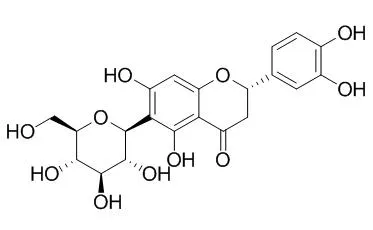| In vitro: |
| Journal of Chromatography A, 2014, 1366:101-109. | | Modeling of the total antioxidant capacity of rooibos (Aspalathus linearis) tea infusions from chromatographic fingerprints and identification of potential antioxidant markers.[Reference: WebLink] |
METHODS AND RESULTS:
Models to predict the total antioxidant capacity (TAC) of rooibos tea infusions from their chromatographic fingerprints and peak table data (content of individual phenolic compounds), obtained using HPLC with diode array detection, were developed in order to identify potential antioxidant markers. Peak table data included the content of 12 compounds, namely phenylpyruvic acid-2-O-glucoside, aspalathin, nothofagin, isoorientin, orientin, ferulic acid, quercetin-3-O-robinobioside, vitexin, hyperoside, rutin, isovitexin and isoquercitrin. The TAC values, measured using the oxygen radical absorbance capacity (ORAC) and DPPH radical scavenging assays, could be predicted from the peak table data or the chromatographic fingerprints (prediction errors 9–12%) using partial least squares (PLS) regression. Prediction models created from samples of only two production years could additionally be used to predict the TAC of samples from another production year (prediction errors < 13%) indicating the robustness of the models in a quality control environment. Furthermore, the uninformative variable elimination (UVE)-PLS method was used to identify potential antioxidant markers for rooibos infusions.
CONCLUSIONS:
All individual phenolic compounds that were quantified were selected as informative variables, except vitexin, while UVE-PLS models developed from chromatographic fingerprints indicated additional antioxidant markers, namely (S)-eriodictyol-6-C-glucoside(Eriodictyol-6-glucoside), (R)-eriodictyol-6-C-glucoside, aspalalinin and two unidentified compounds. The potential antioxidant markers should be validated prior to use in quality control of rooibos tea. |
|






 Cell. 2018 Jan 11;172(1-2):249-261.e12. doi: 10.1016/j.cell.2017.12.019.IF=36.216(2019)
Cell. 2018 Jan 11;172(1-2):249-261.e12. doi: 10.1016/j.cell.2017.12.019.IF=36.216(2019) Cell Metab. 2020 Mar 3;31(3):534-548.e5. doi: 10.1016/j.cmet.2020.01.002.IF=22.415(2019)
Cell Metab. 2020 Mar 3;31(3):534-548.e5. doi: 10.1016/j.cmet.2020.01.002.IF=22.415(2019) Mol Cell. 2017 Nov 16;68(4):673-685.e6. doi: 10.1016/j.molcel.2017.10.022.IF=14.548(2019)
Mol Cell. 2017 Nov 16;68(4):673-685.e6. doi: 10.1016/j.molcel.2017.10.022.IF=14.548(2019)